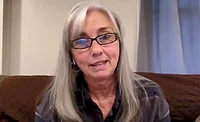How to Negotiate with Insurance Adjusters

Working with insurance adjusters in the restoration industry can be like walking a tightrope. You have to balance the needs of your clients with those of the adjusters. So how do you manage these needs?
Having worked with hundreds of insurance adjusters over the years, I’ve learned that appreciating their perspective is an important first step to building and sustaining good relationships.
As you approach each restoration job, consider these key tips that have helped me along the way.
1. Treat adjusters with respect.
Treating adjusters with respect begins with the understanding that the restoration-adjuster relationship is synergistic. Both professionals are there to do their respective jobs to the best of their abilities and help the property owners in their time of need. After all, the adjuster, like you, is there for a specific purpose. When the relationship goes smoothly, everyone benefits.
The best way to show respect is to provide help when adjusters ask for it. If they ask questions, walk them through the answers and do it willingly. Doing your part to assist adjusters when needed will help build solid relationships for future interactions.
2. Give adjusters the information they need to do their jobs.
Adjusters need specific information to do their jobs. Remember, they have bosses looking over their shoulders and may have to justify their claim approvals. Therefore, it’s important to provide a thorough account of property damages.
Consider a courtroom analogy in which the adjuster is the judge and you’re the lawyer. You need to present the facts including the cause of the damage, a description of the damage and how you mitigated the damage.
The homeowner can help the process by providing supporting documentation such as pre- and post-damage photos and videos, receipts for prior work or materials, and samples of the damaged carpet, flooring, trim, or wallpaper that may be irreplaceable. An item can be irreplaceable if it’s no longer being produced, is an antique, or is a custom cut of trim, woodwork, or tile.
Providing meticulous documentation and photos will save everyone time and frustration.
3. When a situation calls for going beyond an adjuster’s comfort zone, walk him or her on a new path.
Because adjusters are not at the property site during the first 24 hours, it may be more challenging for them to understand the property’s pre-loss condition or the best recommended mitigation methods. In these cases, it’s important to walk the adjuster on a new path, helping him or her understand the process and going over any details, questions, or concerns they have about the project.
For example, the adjuster could state that 48 inches of drywall should be removed from a flooded property. By letting the adjuster know that the Institute of Inspection, Cleaning and Restoration Certification (IICRC) recommends removing 24 inches of drywall for that specific type of damage, the adjuster will recognize that you’re saving him or her money while not taking anything away from the property owner. Realizing that you’re fair will build trust, which may pay large dividends when it comes to the larger details or future collaboration.

4. Be willing to give and take.
The art of negotiation is important as there are times when an adjuster may not be willing to pay for a specific item. If the debated items are important, you may be able to compromise with a give-and-take approach. Sometimes an adjuster may take one item away, but allow another. However, if the items in contention are less significant, consider your time, resources, and willingness to preserve the relationship. If you believe that
settling on a certain outcome is the best scenario, consider moving forward rather than allowing the process to stall.
5. Know when to get the property owners involved in the insurance claim.
Even when you approach each job professionally, there are inevitably times when there may be an impasse with an adjuster. This is the time to get the property owners involved, reminding them that if the insurance claim isn’t paid by the insurance company, it will be their responsibility.
Even with the owners involved, a disagreement may not be resolved. There is no guarantee for expected outcomes, so it’s important to remember that you did a professional job and if the case goes to court, your meticulous documentation will help prove your case.
Utilizing these tips can help make working with adjusters easier, less frustrating and more profitable.
Looking for a reprint of this article?
From high-res PDFs to custom plaques, order your copy today!






